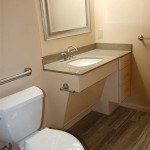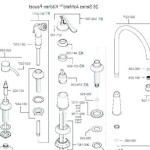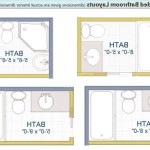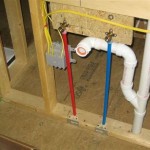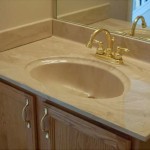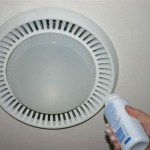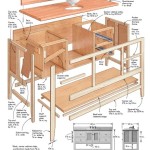Why Do I Have Sugar Ants in My Bathroom?
The persistent presence of sugar ants in a bathroom, despite regular cleaning efforts, can be a frustrating experience for homeowners. While these tiny insects may seem innocuous, their presence often indicates underlying issues and demands a thorough investigation to address the root cause and prevent future infestations. Understanding the factors that attract sugar ants to bathrooms is crucial for implementing effective control measures.
Sugar ants, a common term often used to describe various species within the ant family Formicidae, including but not limited to the odorous house ant (Tapinoma sessile) and pavement ants (Tetramorium caespitum), are attracted to sources of sugar and moisture. The bathroom environment often provides both of these essential resources, making it a prime target for these opportunistic insects. Identifying the specific attractants within a bathroom is the first step in eliminating the problem.
Moisture Sources: A Primary Attractant
Bathrooms, by their very nature, are environments prone to moisture. Leaky faucets, showerheads, and toilets provide readily available sources of water. Even seemingly minor drips can sustain a colony of ants. The constant humidity within a bathroom, especially after showering or bathing, also contributes to a favorable environment for these pests. Sugar ants require water for survival and colony maintenance, and a consistently damp bathroom offers an ideal habitat.
Beyond obvious leaks, condensation can also play a significant role in attracting sugar ants. Condensation forms on cold surfaces, such as pipes and toilet tanks, creating small pools of water that ants can access. Insufficient ventilation exacerbates this problem, as it allows moisture to accumulate and persist within the bathroom. Addressing these moisture-related issues is a critical step in making the bathroom less appealing to sugar ants.
Furthermore, damp areas under sinks and around toilets, often hidden from view, can serve as ideal nesting sites for ants. These areas provide both moisture and protection, allowing ant colonies to thrive undisturbed. Thoroughly inspecting these hidden areas is essential for identifying and eliminating potential nesting sites. Using a flashlight and carefully examining these spaces can reveal the presence of ants and any visible signs of their activity.
Addressing moisture problems should involve repairing any leaks promptly, improving ventilation to reduce humidity, and ensuring that all surfaces are thoroughly dried after use. Using a dehumidifier in the bathroom can also help to control moisture levels and create a less hospitable environment for sugar ants. Regular inspection of plumbing fixtures and surrounding areas is crucial for detecting and addressing potential moisture sources before they attract ants.
Food Sources: Beyond Sugar Bowls
While the term "sugar ant" implies a preference for sugary substances, these ants are opportunistic feeders and will consume a variety of food sources. In a bathroom, these food sources may be less obvious than a spilled soda, but they are present nonetheless. Hair, skin cells, and even residue from personal care products can serve as food sources for these small insects.
Hair, both human and pet, contains proteins and oils that can attract ants. Shed hair accumulating in drains or on the floor provides a readily available food source. Similarly, skin cells, which are constantly being shed, can also attract ants. Regular cleaning to remove hair and skin cells can significantly reduce the availability of these food sources.
Residue from personal care products, such as soap, shampoo, toothpaste, and lotions, can also attract sugar ants. These products often contain sugars, oils, and other organic compounds that ants find appealing. Spills and splatters, even if seemingly minor, can leave behind residue that attracts ants. Wiping down surfaces regularly and cleaning up any spills promptly is essential for preventing ants from being drawn to these food sources.
Furthermore, the presence of standing water in dishes holding toothbrushes or other bathroom items can also attract ants, as it provides both water and a potential breeding ground for bacteria and fungi, which can serve as food sources. Emptying and cleaning these dishes regularly can eliminate this attractant. Proper storage of personal care products, ensuring that lids are tightly closed and containers are properly sealed, can also help to prevent spills and reduce the availability of food sources.
Access Points and Entry Routes
Even if a bathroom provides ample sources of food and water, ants need a way to access these resources. Identifying and sealing potential entry points is crucial for preventing ants from entering the bathroom in the first place. These entry points can be surprisingly small, often no larger than a pinhole, highlighting the importance of a thorough inspection.
Cracks and crevices in walls, floors, and countertops provide easy access for ants to enter the bathroom. These cracks can be caused by settling, damage, or simply wear and tear. Sealing these cracks with caulk or other appropriate sealant can effectively block ants from using them as entry points. Paying particular attention to areas around pipes, fixtures, and windows is crucial, as these are common areas for cracks and openings to develop.
Gaps around pipes and wiring entering the bathroom provide another potential entry point for ants. These gaps are often overlooked, but they can provide a direct pathway for ants to access the bathroom from behind walls or under floors. Sealing these gaps with caulk or expanding foam can prevent ants from using them as entry points. Carefully inspecting these areas and addressing any gaps or openings is essential for preventing ant infestations.
Windows and doors, even when closed, can provide entry points for ants if they are not properly sealed. Worn weather stripping or gaps around window frames can allow ants to enter the bathroom. Replacing damaged weather stripping and sealing gaps around window frames can effectively block ants from entering through these pathways. Ensuring that windows and doors are properly sealed is an important step in pest-proofing the bathroom.
Furthermore, ants can also enter the bathroom through shared walls with adjacent rooms, especially if those rooms have existing ant infestations. Inspecting adjacent rooms for signs of ant activity and addressing any infestations in those areas can help to prevent ants from spreading to the bathroom. Coordinating pest control efforts across multiple rooms or even the entire house may be necessary to effectively eliminate ant infestations.
In addition to structural entry points, ants can also be inadvertently brought into the bathroom on items such as potted plants or grocery bags. Inspecting these items for ants before bringing them into the bathroom can help to prevent accidental introductions. Being mindful of potential entry points and taking steps to seal them is a crucial component of a comprehensive ant control strategy.
Beyond addressing the immediate attractants and entry points within the bathroom, it is also important to consider broader preventative measures for the entire home. Maintaining a clean and sanitary environment throughout the house, properly storing food, and promptly cleaning up spills can help to reduce the overall attractiveness of the home to ants. Regular pest control treatments, either professionally or through DIY methods, can also help to prevent ant infestations from taking hold.
Effective ant control requires a multi-faceted approach that addresses the underlying causes of the infestation. By identifying and eliminating sources of moisture and food, sealing entry points, and implementing preventative measures, homeowners can successfully eliminate sugar ants from their bathrooms and create a less hospitable environment for these persistent pests. Consistent effort and attention to detail are key to achieving long-term success in ant control.

How To Get Rid Of Sugar Ants John Moore Services

Where Do Sugar Ants Come From How To Keep Them Away Abc Blog

Boise Idaho Pest Control Pestcom

Why Do I Have Ants In My Bathroom

Why Do I Have Hundreds Of Tiny Ants All Over My Kitchen

How To Get Rid Of Ants In The Bathroom

Niagara Pest Control Why Are There Carpenter Ants In The Bathroom

How To Get Rid Of Tiny Ants In Your Bathroom

Get Rid Of Sugar Ants In 3 Steps

Here S Why Ants Are In Your Room Even If There No Food Pest Pointers
